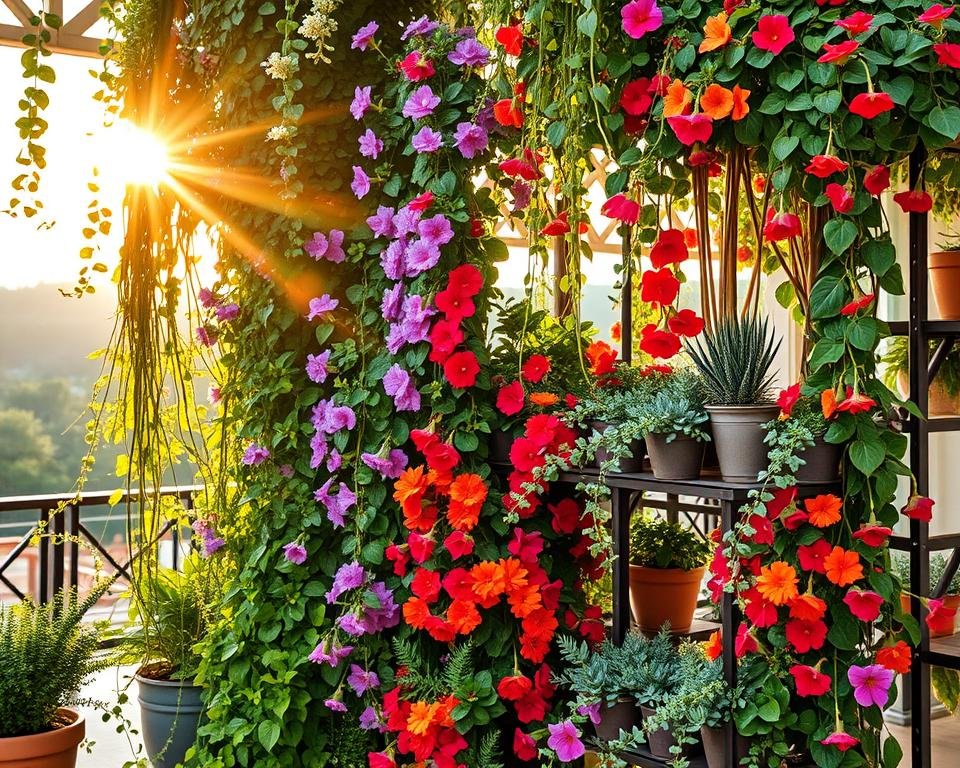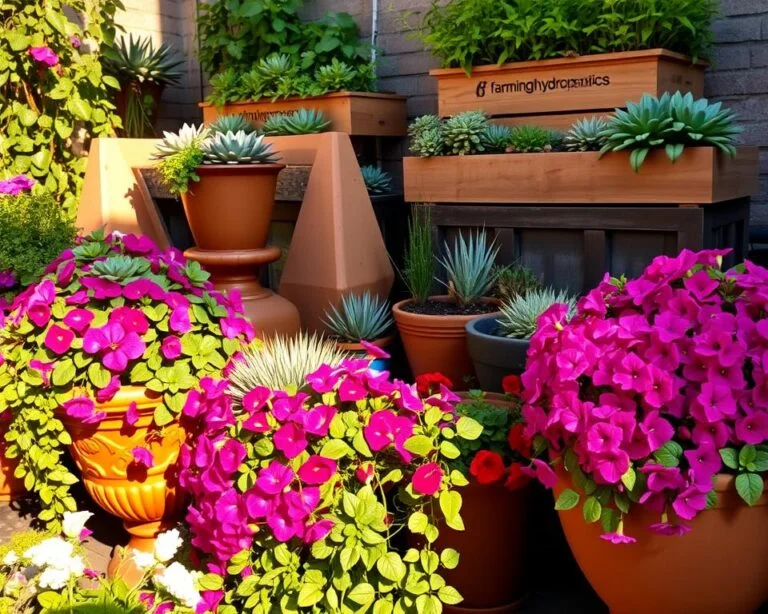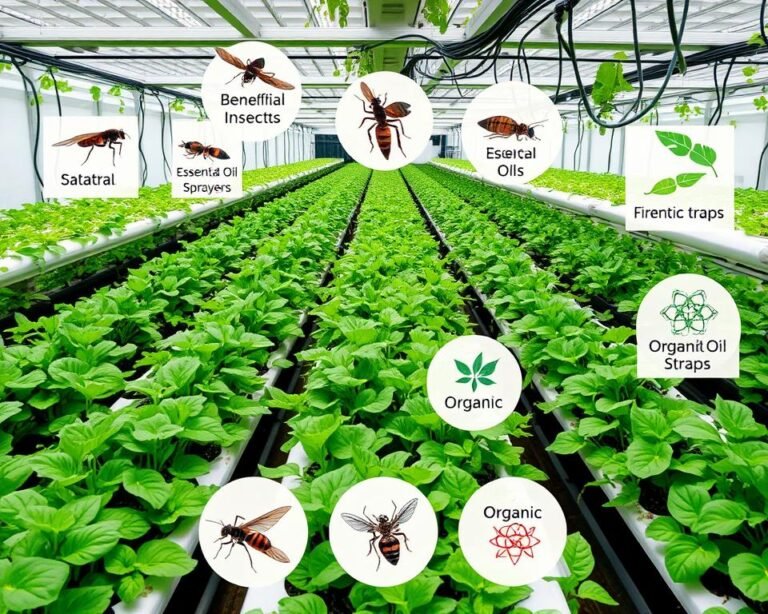Choosing the Right Color Schemes for Your Vertical Garden
Standing in my garden, I remember the first time I realized how powerful color could be. The vibrant hues dancing across my vertical garden transformed an ordinary wall into a living masterpiece. Color isn’t just about beauty—it’s about creating an emotional landscape that speaks directly to your soul.
When designing a vertical garden, color schemes become your primary artistic tool. They can energize a space, create calm, or tell a visual story that captivates everyone who sees it. Garden design experts understand that color is the first element our eyes, making it crucial in creating stunning vertical garden aesthetics.
Your vertical garden’s design can dramatically transform outdoor spaces. Vibrant reds, oranges, and yellows can inject energy, while soft pastels and whites promote serenity. Each color choice influences the garden’s mood and visual impact, turning a simple wall into a breathtaking living canvas.
Key Takeaways
- Color dramatically influences vertical garden aesthetics
- Different colors evoke unique emotional responses
- Vertical gardens offer unique design opportunities
- Strategic color schemes can transform spaces
- Plant selection is critical for color harmony
Understanding Color Theory in Vertical Garden Design
Color theory turns vertical gardens into stunning sights. It uses color psychology and harmony to create amazing designs. These designs can amaze and inspire anyone who sees them.
Color theory starts with how different colors work together. In vertical gardens, color does more than look good. It also affects how we feel and see the garden.
Primary Colors and Their Impact
Primary colors – red, blue, and yellow – are key in garden color theory. Each color adds its own energy to your garden:
- Red: Energetic and passionate, grabs your attention right away
- Blue: Calming and serene, makes you feel peaceful
- Yellow: Vibrant and cheerful, brings warmth and light
Color Wheel Basics for Garden Planning
The color wheel helps gardeners plan colors. By picking the right colors, you can make beautiful designs. These designs follow important design rules:
- Complementary colors make bold, striking contrasts
- Analogous colors create smooth, calming effects
- Monochromatic schemes offer elegant, simple designs
Understanding Warm and Cool Tones
Color temperature is key in vertical garden design. Warm colors like reds and yellows energize. Cool colors like blues and greens calm. Designers use the 80/20 rule to mix warm and cool colors for stunning gardens.
Creating Harmonious Plant Combinations
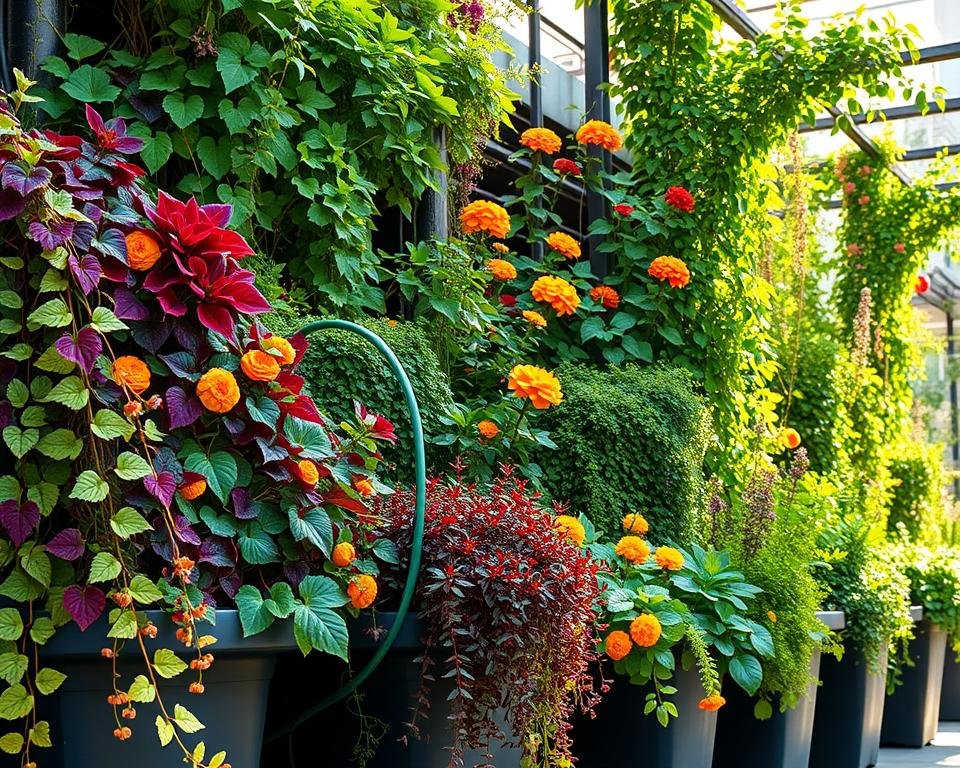
Creating a vertical garden needs careful thought about color. It’s all about how colors work together. Experts say to use two main colors and green to keep it looking good.
When picking colors for your vertical garden, think about these tips:
- Complementary colors for a bold contrast
- Analogous colors for a smooth look
- Monochromatic for a single-color vibe
Your color choices can really change how your garden feels. Warm colors like orange, red, and yellow bring energy. Cool colors such as blue, green, and purple make it calm.
| Color Scheme | Emotional Impact | Example Plants |
|---|---|---|
| Complementary | High Energy | Purple Lobelia, Yellow Coreopsis |
| Analogous | Harmonious | Blue, Purple, Mauve Flowers |
| Monochromatic | Calm and Unified | Various Shades of Green |
Your garden’s colors should change with the seasons. Choose plants that bloom at different times. A good garden has 65% green and 35% color for a lively look.
Color Schemes and Seasonal Transitions
Creating a vertical garden that looks great all year takes careful planning. You need to pick the right colors and plants. Each season brings new chances to make your garden look amazing, from spring to winter.
Knowing about color meanings and how seasons change helps. You can make a garden that stays lively and interesting all year. Every season offers special colors that can make your garden even more beautiful.
Spring Color Palettes
Spring brings fresh and new colors. Think about using plants with:
- Soft pastel tones like lavender and mint green
- Bright flowering plants with cool undertones
- Delicate blooming perennials
Summer and Fall Transitions
As the seasons change, your garden can stay interesting. Summer brings warm, bold colors. Fall adds rich, earthy tones.
| Season | Color Characteristics | Recommended Plants |
|---|---|---|
| Summer | Bright, warm colors | Marigolds, Sunflowers |
| Fall | Deep, muted earth tones | Chrysanthemums, Ornamental Grasses |
Winter Interest Planning
Winter doesn’t mean your garden has to be dull. Choose plants with interesting textures and colors. Evergreens, plants with berries, and those with unique seed heads add beauty in winter.
- Use plants with silvery or grey foliage
- Incorporate plants with persistent winter berries
- Select plants with interesting bark textures
By picking the right plants for each season, your vertical garden will stay beautiful all year.
Incorporating Color Through Foliage and Flowers
Creating a stunning vertical garden is more than picking flowers. It’s about using foliage color and texture to enhance your design. By choosing a variety of plants, you can create a lively landscape that draws attention all year.
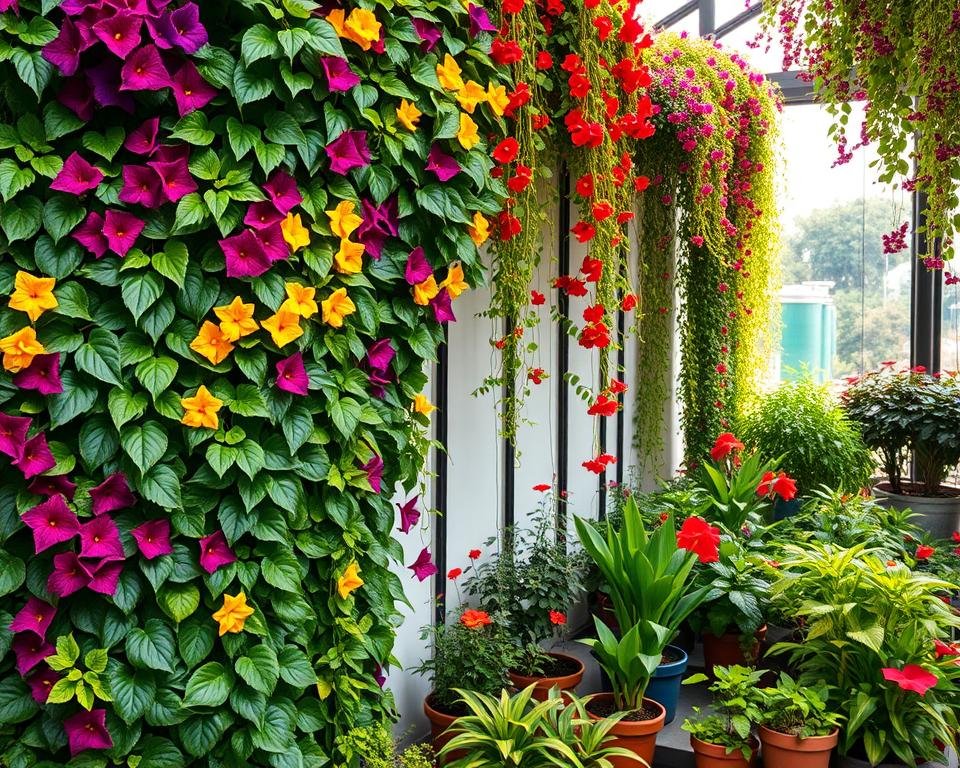
When planning your color scheme, think about plants that add interest beyond flowers. Some great foliage options include:
- Coleus with dramatic leaf patterns
- Decorative grasses with variable heights
- Hostas featuring unique leaf textures
Seasonal flowers can really make your vertical garden pop. Here are some plants that add exciting colors:
| Season | Flower Colors | Recommended Plants |
|---|---|---|
| Spring | Blush, White, Mauve | Baptisia, Larkspur |
| Summer | Yellow, Red, Pink | Zinnias, Sunflowers, Coxcomb |
| Fall | Orange, Coral, Purple | Ageratum, Phlox |
Understanding color theory is key to professional garden design. Using complementary and analogous colors can make your vertical garden look amazing. It turns your space into a living masterpiece.
Don’t forget to balance color intensity and plant growth habits. This will add depth and dimension to your design.
Design Elements for Visual Impact
Creating a stunning vertical garden is more than picking plants. It’s about designing with visual elements to make your garden stand out. Understanding color, texture, and placement is key to making your garden beautiful.
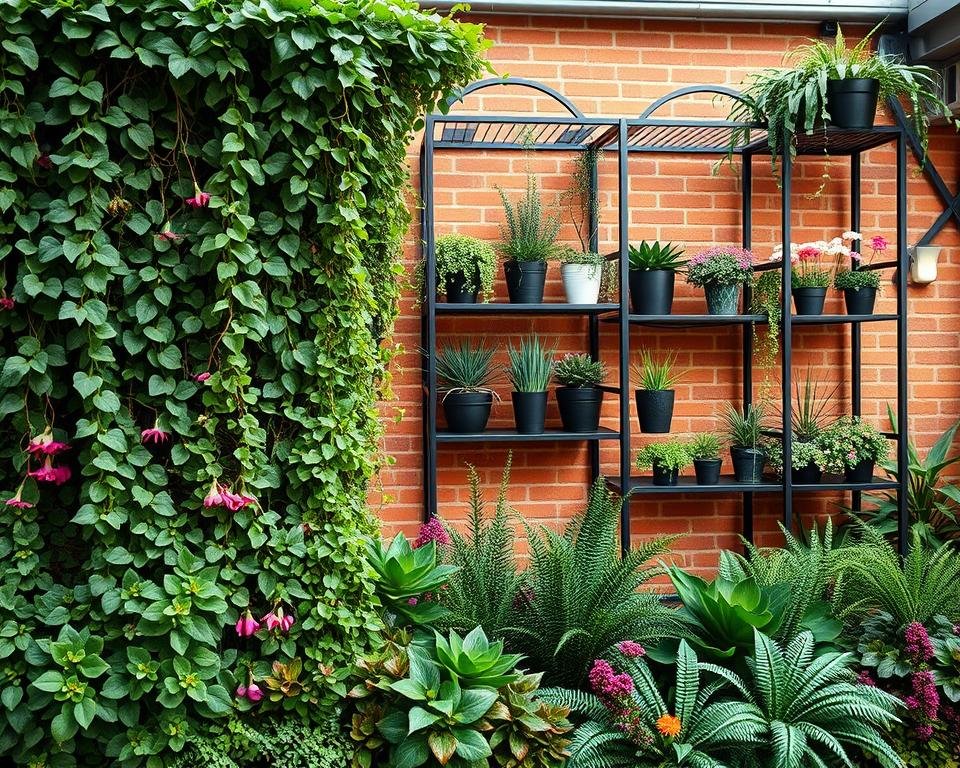
- Integrate non-plant design elements like containers and trellises
- Utilize contrasting textures and patterns
- Exploit light and shadow effects
- Create strategic focal points
Texture and Pattern Coordination
Texture is important in your garden’s look. Mixing smooth succulent leaves with rough ferns adds depth. Since 8% of people see colors differently, using texture can make your garden more accessible.
Light and Shadow Effects
Lighting changes how your vertical garden looks. Placing lights right can make certain plants pop, create shadows, and show off colors. Warm and cool lights can change the mood and look of your garden.
Creating Focal Points
Make your garden interesting by setting up focal points. Choose plants with bold colors or shapes to catch the eye. Use colors that contrast well, like blue plants with orange containers.
| Design Element | Impact on Vertical Garden |
|---|---|
| Texture Variation | Adds depth and visual complexity |
| Strategic Lighting | Enhances color perception and mood |
| Focal Point Plants | Creates visual hierarchy and interest |
Remember, your vertical garden is a living canvas. Try out different design elements to make a space that shows off your style.
Conclusion
Your vertical garden is more than plants—it’s a canvas of color. Color schemes bring harmony and emotion to your space. By learning color theory, you can make your garden stand out and touch hearts.
Choosing colors is a way to express yourself. Warm and cool tones can change how we see your garden. Colors like reds bring energy, while greens show growth and care for the earth.
Trying out different colors can make your garden change with the seasons. You can go for one color or mix them up. Your garden will show off your style and creativity.
Creating a vertical garden is both art and science. Using color theory and your own ideas, you’ll make a beautiful space. It will not only look great but also feel special to you. Begin your color adventure today and see your garden come alive.

